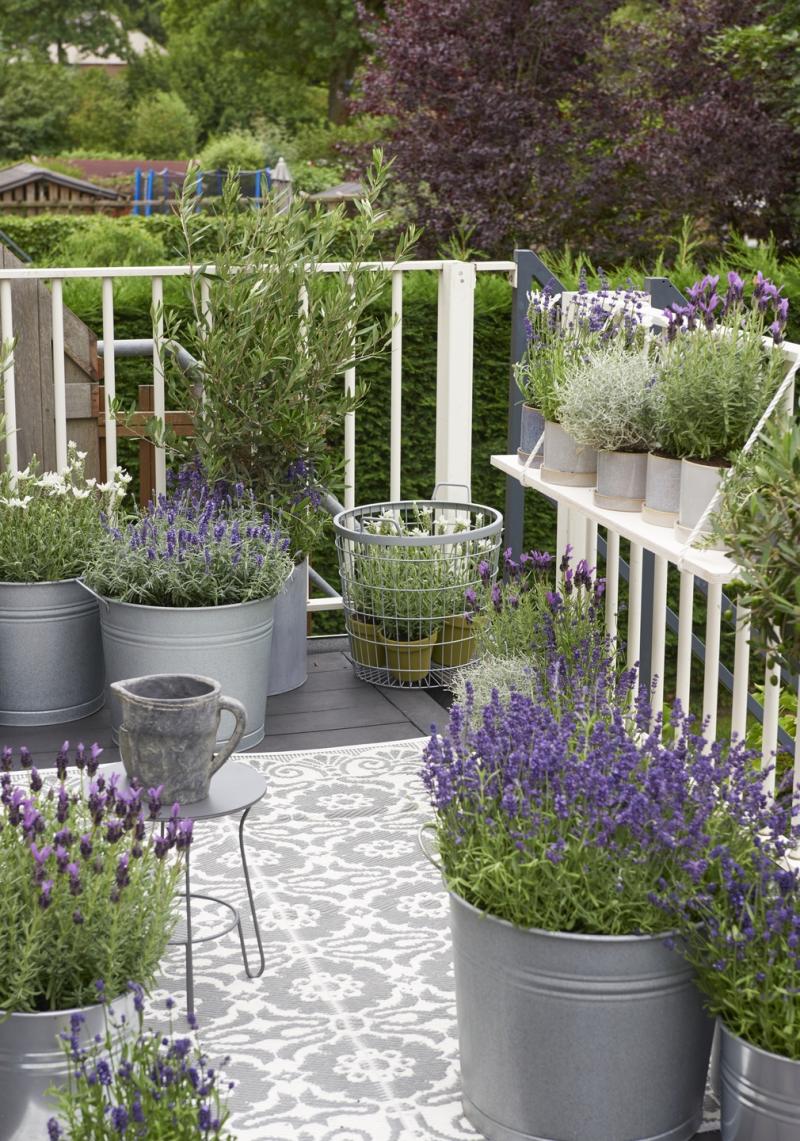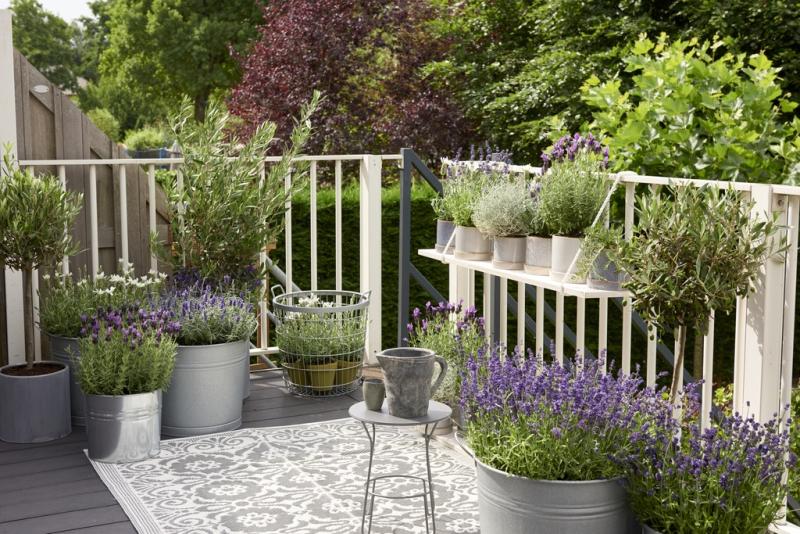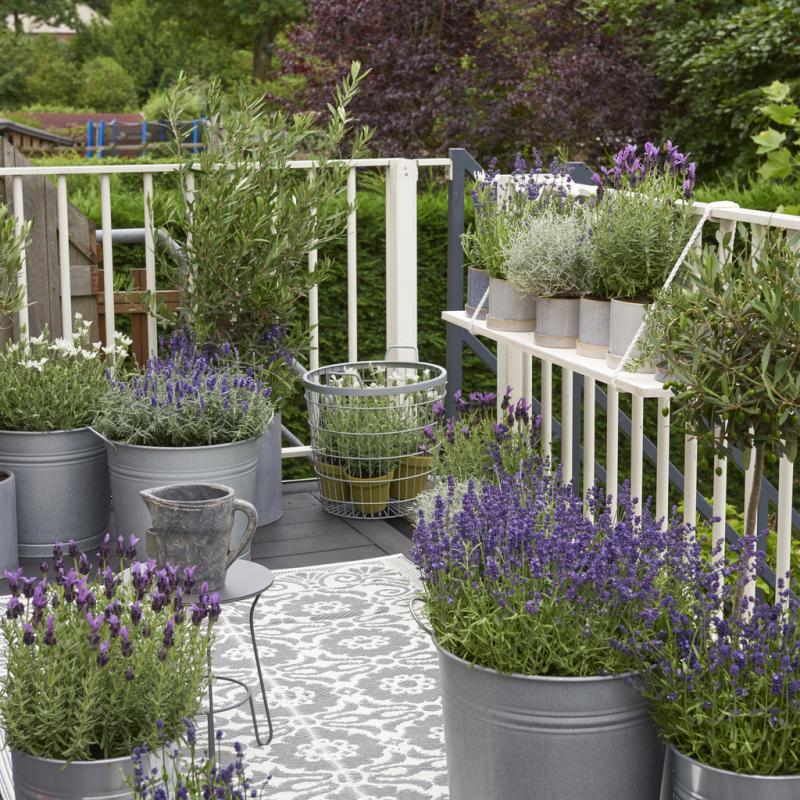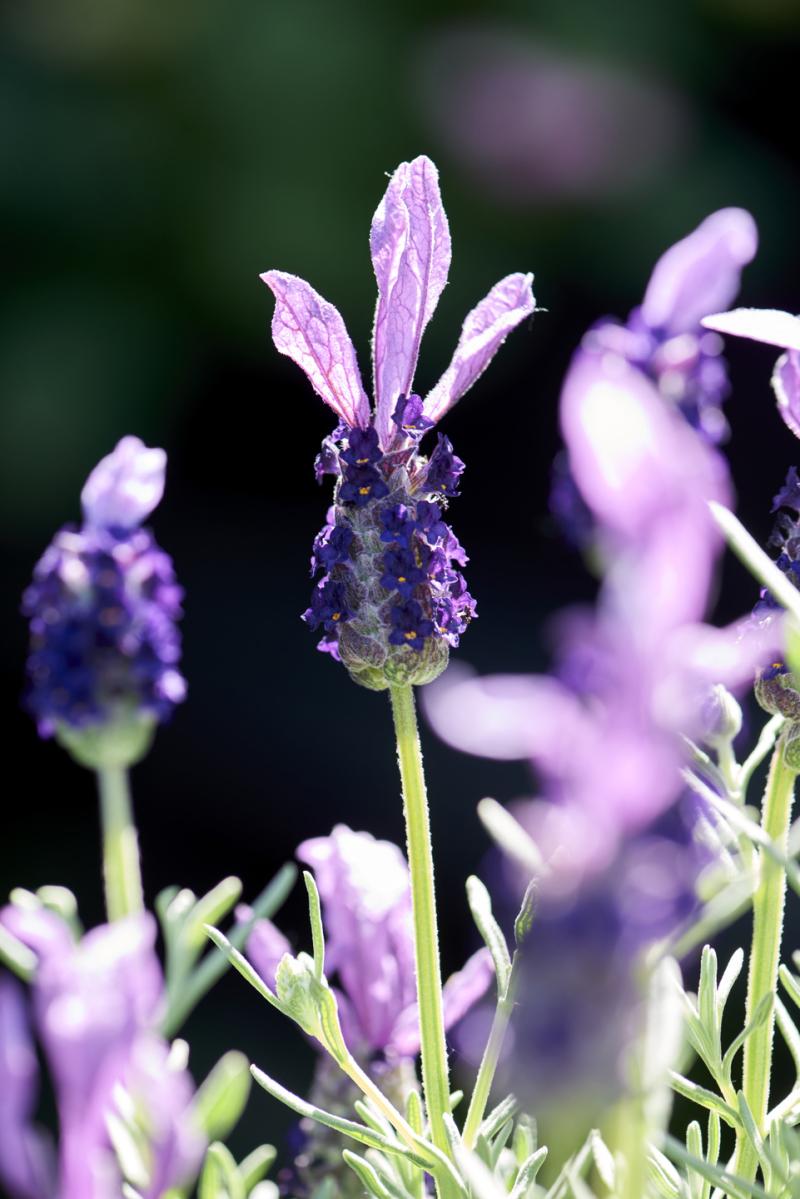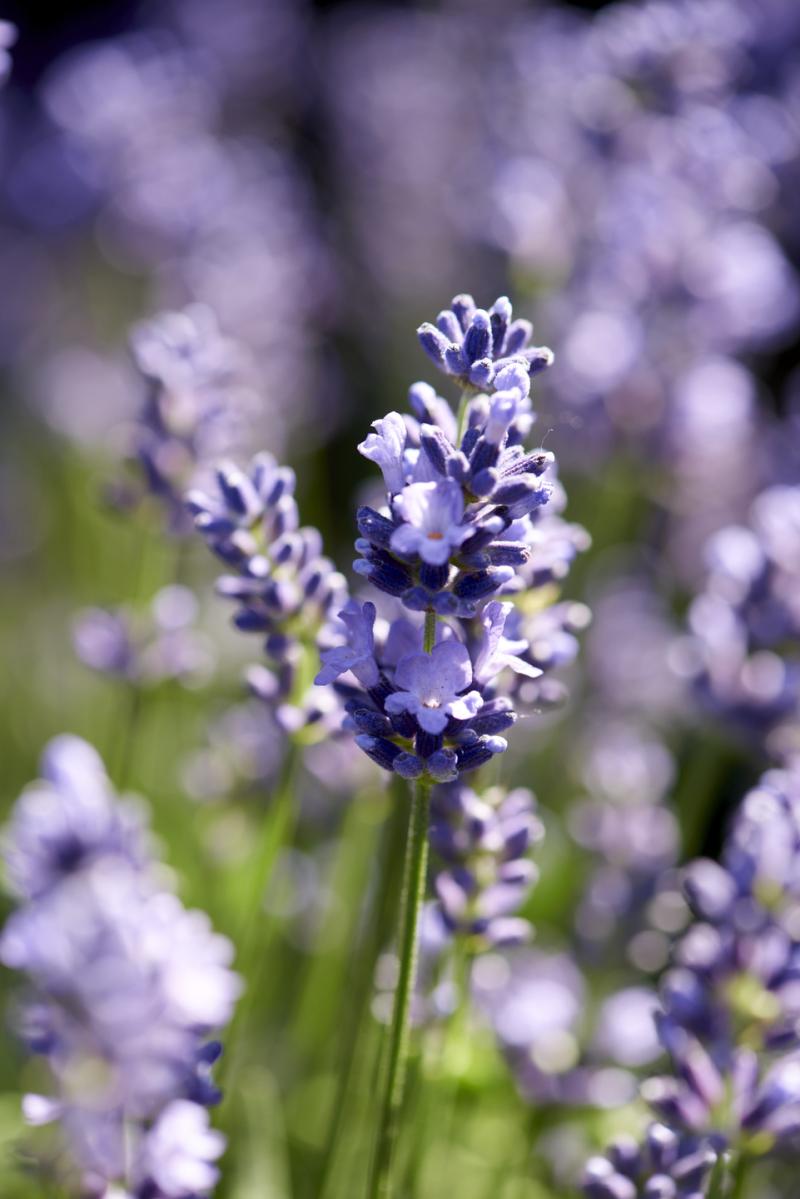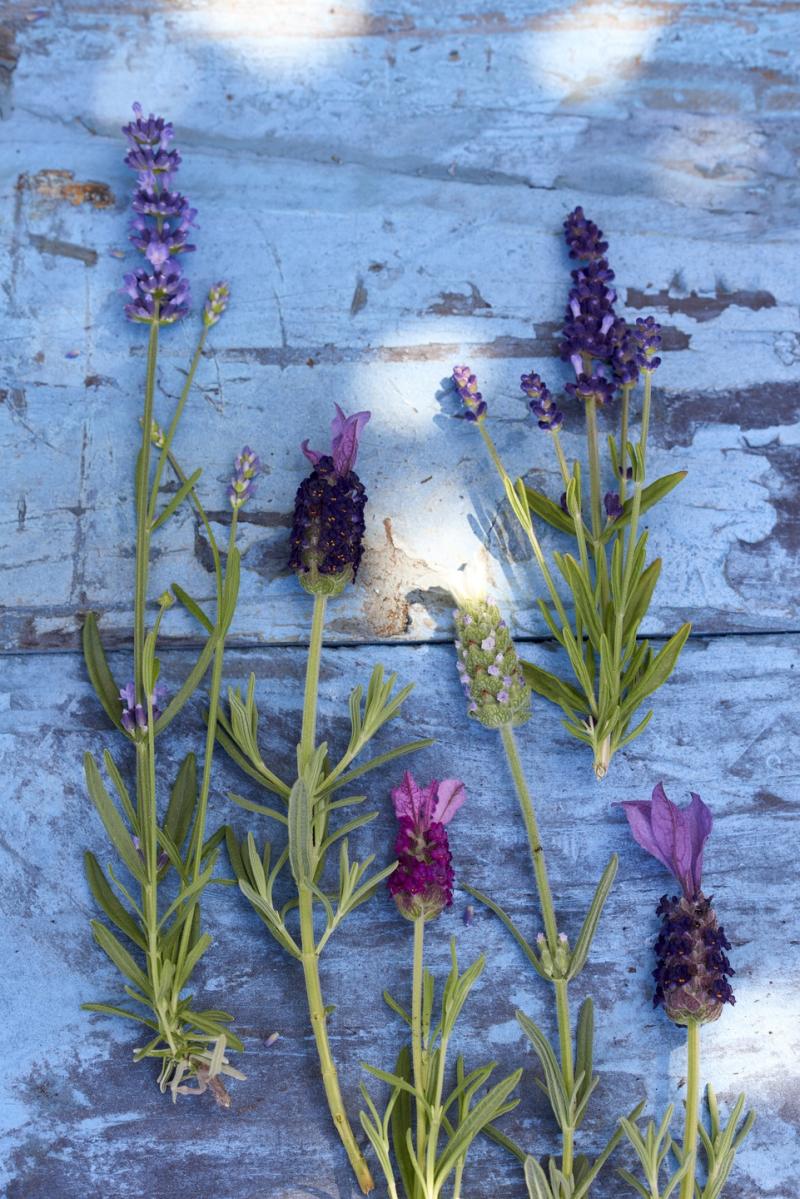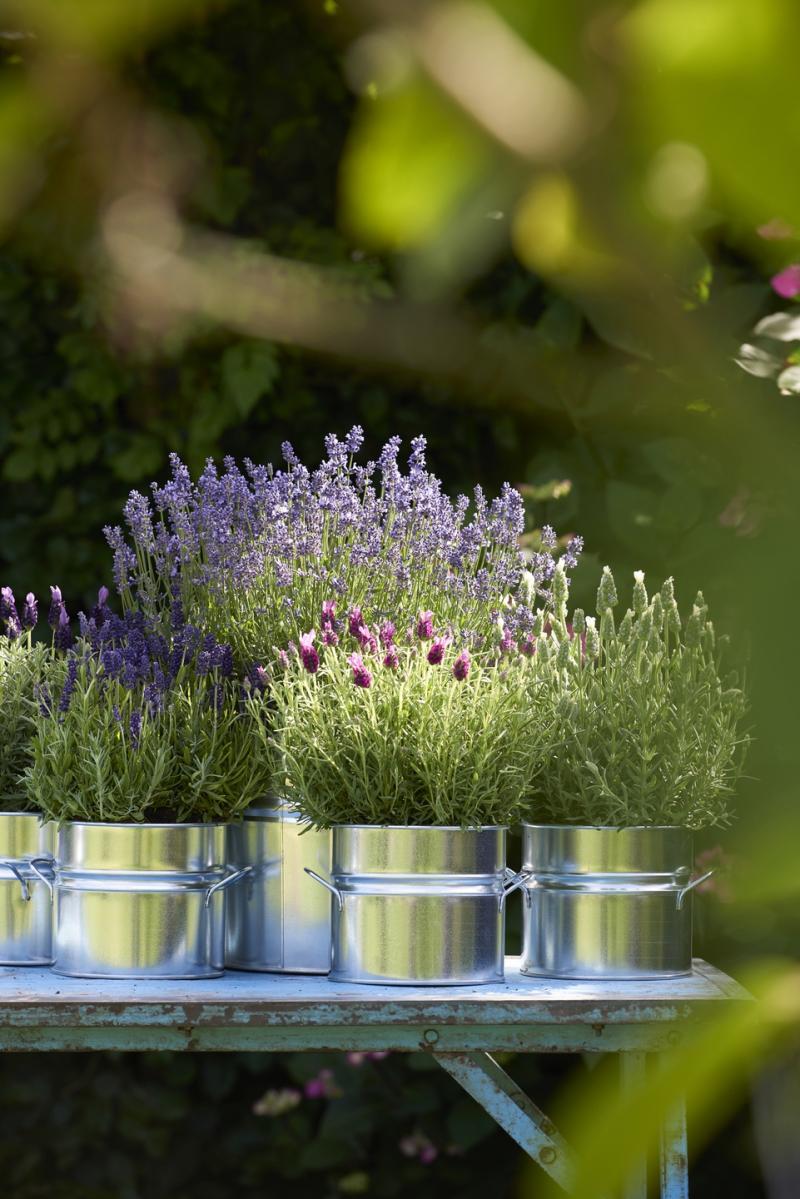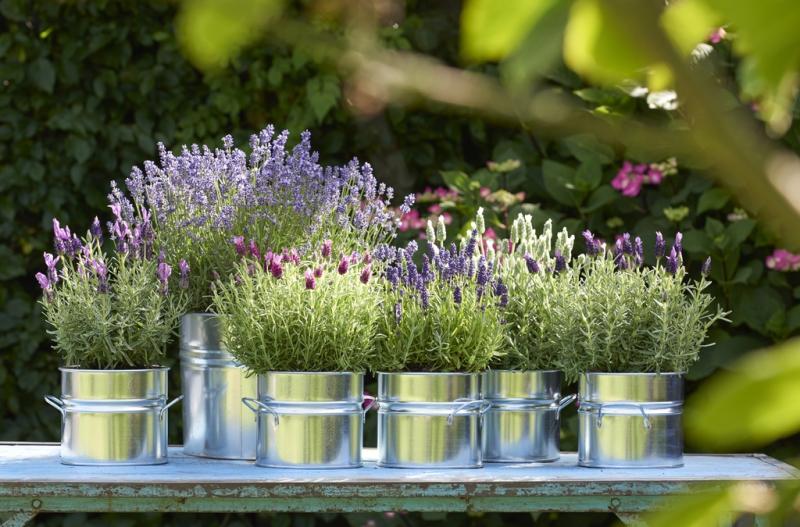Balcony Plant for 2018: lavender
A floral profusion in purple and grey-green
Nothing makes you think of Provence and a sun-drenched Summer like lavender (Lavandula). The plant comes in many forms, offers colours ranging from near white and lilac to deep purple, requires little maintenance and spreads a delectable fragrance. Lavender is particularly suitable as a balcony bloomer because the plant can cope well with sun and wind, and is available in sizes ranging from small enough for a window box through to larger specimens which can be displayed solo in a pot. The flowers on all forms of lavender grow straight up, so that they take up little space and still provide plenty of colour and scent.
Range
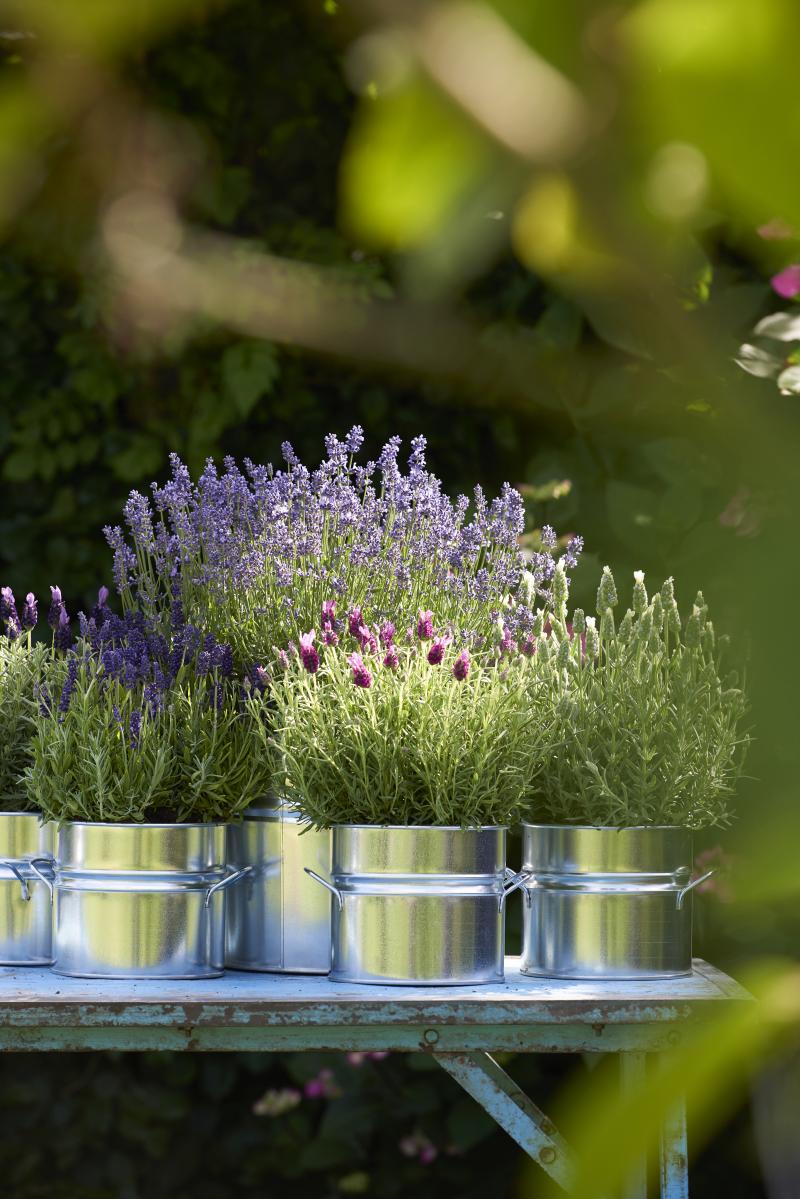
Lavender trivia
• Le Lavandou in the South of France was previously the Roman ‘laundry place’ Lavandula.
• The ancient Egyptians were also great fans of lavender. Pharaoh Tutankhamen was laid in his tomb with a jar of a lavender perfume by his side.
• Lavender has been known for its calming properties since antiquity.
• Scented bags can be made from the dried flowers.
Origin
Lavender is a member of the mint family, and particularly grows in countries around the Mediterranean, although the plant can also do well in the cooler regions of Central and Northern Europe.
What to look for when buying
• Check the ripeness, hardiness and the number of flowers per plant: lavender should be showing some colour in the form of buds and flowers at the time of purchase
• Lavender requires damp soil but dry leaves. The plants should not be placed together for too long because they are prone to botrytis.
• Grey mould is a fungus which develops if lavender has had insufficient ventilation during storage and shipping.
• The plants must also be free of pests and diseases such as aphids and spittlebugs.
Care tips for consumers
• Lavender prefers a light and sunny spots, and needs warmth to flower profusely.
• The soil can be slightly damp, but ensure that surplus water can drain away.
• Some plant food once a fortnight helps to keep the plant healthy, compact and richly flowering in pots and containers.
• Prune back in February or March if required, but leave at least 15 cm.
Sales and display tips for lavender
The various shades of lavender are well-suited to a display with a gradation of colour from light to dark. Don’t place the plants right next to each other - lavender must be able to breathe a bit. Reinforce the plant's summery French feel with image material and terracotta pots, and show what lavender can do in the limited space of a balcony with a bistro set. Combining the plant with items such as lavender soap, lavender salt and lavender oil can boost sales.
POS-material Lavender:
Download promotion material by using the following links:
- Poster Lavender
- Banner Lavender
Image use and credits
You can download and use the images below free of charge if you credit Thejoyofplants.co.uk
Balcony Plant of the Year
Lavender is the Balcony Plant for 2018. The ‘Balcony Plant of the Year’ is an initiative from the Flower Council of Holland. Every year a media jury made up of editors of lifestyle, interiors and garden magazines, vloggers and bloggers examines 10 candidates at the Flower Council’s request to pick the balcony plant which most appeals. For 2018 it's lavender, because more greenery, more colour and more fragrance makes everyone happier, particularly up high.
Follow us + more inspiration:
Facebook: The Joy of Plants
Twitter: @thejoyofplants
Instagram: @thejoyofplants
Thejoyofplants.co.uk
Thejoyofplants.co.uk is an initiative from the Flower Council of Holland to help consumers discover that you feel better with plants around you.

